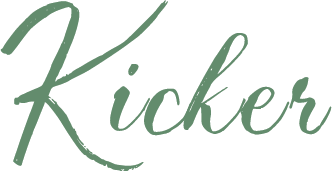“Practicing Breathing Techniques And Relaxation For Labor”


The journey of childbirth is a transformative experience, and the ability to remain calm and focused during labor is significant. Practising breathing and relaxation techniques can significantly enhance a woman’s labor experience. In this article, we will explore the importance of these techniques, and benefits, and how to include them in your birthing plan for more comfortable labor.
Labor is a physically and emotionally demanding experience, and finding ways to manage stress and discomfort is crucial for a positive birthing process. Practising breathing techniques and relaxation methods can play an essential role in preparing expectant mothers for labor. These strategies not only help to ease tension and anxiety but also enhance focus and endurance, contributing to effective pain management. In this article, we will explore breathing exercises and relaxation methods that you can practice before and during labor. This will empower women to take control of their birthing experience and harness their inner strength for a smoother and more manageable delivery.
1. Understanding the Significance
a. The Mind-Body Connection
- The mind-body connection is the interplay between mental and physical health, where emotional well-being can impact bodily responses.
- Understanding and harnessing this connection during labor can help manage pain and reduce anxiety. It also promotes a sense of empowerment.
b. Stress and Pain Response
- Stress can amplify the perception of pain and tension during labor, which can lead to a more challenging birthing experience.
- Practising relaxation techniques can help reduce stress and, subsequently, pain perception during labor.
Also read: Practising Comfort And Pain Relief Techniques For Labor
2. Benefits of Breathing Techniques
a. Pain Management
- Breathing techniques provide a distraction and a sense of control during labor, which can help manage pain more effectively.
- Focused and rhythmic breathing can release endorphins, the body’s natural pain relievers, to ease discomfort.
b. Oxygen Supply
- Deep, controlled breathing techniques ensure a consistent and ample oxygen supply for the mother and the baby during labor.
- Proper oxygenation can boost energy levels and support the baby’s well-being throughout the birthing process.
3. Relaxation Methods for Labor
a. Visualization
- Visualization is a relaxation technique involving mental imagery that can transport you to a calm place, helping you relax and stay focused during labor.
- Imagining a peaceful environment can reduce anxiety and create a positive mindset, which benefits labor.
b. Progressive Muscle Relaxation
- Progressive muscle relaxation involves tensing and then releasing different muscle groups to promote relaxation and reduce tension.
- This technique can help you identify and release physical tension, making the labor process more comfortable and efficient.
Also read: Natural Ways To Induce Labor And Encourage Progress
4. Breathing Techniques for Labor
a. Slow, Deep Breathing
- Slow, deep breathing involves inhaling deeply through the nose, holding the breath for a moment, and exhaling slowly through pursed lips.
- This technique helps reduce stress, oxygenate the body, and maintain a calm and focused state of mind during labor.
b. Rhythmic Breathing
- Rhythmic breathing involves consistent patterns, such as counting to four during each inhale and exhale.
- This technique provides a steady rhythm to help you stay focused and reduce anxiety, promoting a sense of control.
5. Preparing for Labor
a. Antenatal Classes
- Antenatal or childbirth education classes are designed to prepare expectant parents for labor and childbirth.
- These classes often include instruction on breathing techniques and relaxation methods to help you feel confident and prepared for labor.
b. Birth Plans
- A birth plan outlines your preferences and expectations for labor and delivery, including breathing techniques and relaxation methods.
- Creating a birth plan allows you to communicate your desires with your doctors and support team. This ensures a more positive birthing experience.
6. Practicing at Home
a. Daily Routine
- Establishing a daily practice of breathing techniques and relaxation methods can help you become more proficient and comfortable with these tools.
- Consistency in practice ensures that you can easily access and utilize these techniques when you need them most during labor.
b. Partner Involvement
- Partner involvement in practising these techniques can provide emotional support and strengthen your connection during labor.
- Partners can actively participate by assisting with guided relaxation, practising breathing together, and offering reassurance.
7. During Labor
a. Supportive Environment
- Creating a supportive environment during labor involves having a birthing plan and communicating your preferences with your healthcare team.
- This ensures you can implement your techniques without obstacles, building a relaxed and comfortable atmosphere.
b. Guided Assistance
- Guided assistance refers to the support and encouragement provided by your birthing team, including nurses, midwives, doulas, or your partner.
- A knowledgeable and supportive team can help guide you through breathing techniques and relaxation methods during labor.
Practising breathing techniques and relaxation methods during labor is a powerful tool that empowers women to have a more comfortable and positive birthing experience. Understanding the mind-body connection and the benefits of these techniques is crucial. Knowing how to prepare for and utilize them can help in reducing stress and pain during labor.
Whether it’s slow, deep breathing or visualization, these techniques can provide control, pain management, and a positive mindset during one of life’s most significant experiences. By including these methods into your birthing plan and practising them, you can navigate the challenges of labor, creating a more memorable journey into motherhood.
- Why Burping Your Newborn After Feeding Is Essential
Burping your newborn may feel like a…Read More
- Understanding Ovulation Pain: A Comprehensive Guide
Ovulation pain, is a common mid-cycle symptom…Read More
- How to manage work-life balance with a newborn baby?
Welcoming a cutie pie or a smarty…Read More



